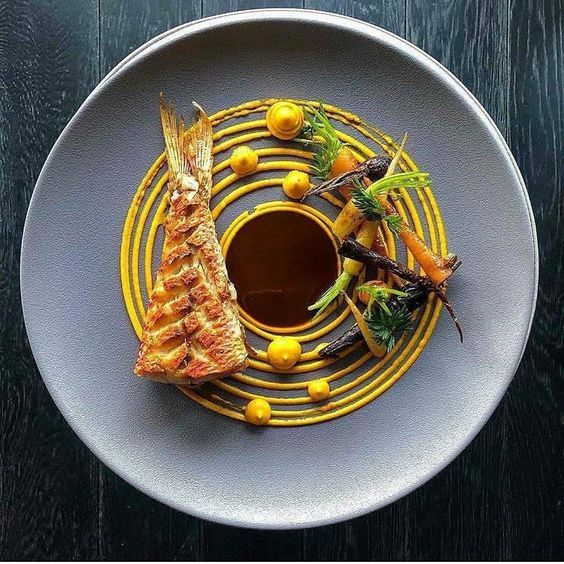Plating food is an art that elevates a meal from mere sustenance to a visual and sensory delight. In “How to Plate Food? – Direct Tips from a Chef,” we delve into the techniques used by professional chefs to create stunning presentations that enhance the dining experience.
Perfecting food plating involves more than just arranging ingredients on a plate; it requires a keen eye for detail, balance, and harmony. From choosing the right plate and understanding color contrasts to mastering garnishes and height, these tips from seasoned chefs will guide you through the process.
Learn how to use negative space effectively, create visual interest with textures, and highlight the main components of your dish. Whether you’re preparing a meal for a special occasion or simply wanting to impress at a dinner party, these practical and direct tips will help you plate like a pro, turning every dish into a work of art.
A Direct Tips From Chef – How To Plate Food
Begin your plating journey by visualizing the final product through drawings and sketches. Let inspiration flow from pictures or objects that spark your creativity. Assemble a “practice plate” to refine your ideas before the actual plating. By sketching your presentation, you can better visualize the final plate and ensure it aligns with your overall vision. Staying updated with the latest plating trends through food magazines and culinary shows can also ignite fresh ideas.
When it comes to plating, simplicity is key. Focus on one central ingredient and allow it to shine by giving it ample space. Clutter on a plate not only distracts from the main elements but can also confuse diners. A clean, well-spaced arrangement enhances the dish’s visual appeal and directs attention where it’s most needed.
Balance in plating is crucial, not just for visual appeal but also for taste. Experiment with contrasting flavors and textures to create a harmonious dish. Serve sauces on the side to prevent sogginess and maintain the integrity of the main ingredients. Play with shapes and colors, combining elements like rounds, cones, and rods to add visual interest. Using a mix of textures creates exciting mouthfeels that keep diners engaged. Consider serving different parts of the dish on separate plates to achieve visual and flavor balance. Always remember that presentation should complement flavor; aim for a hot element, a cold element, something crunchy, and something soft to keep the palate entertained.
Portion size is another critical aspect of plating. Ensure the right amount of each ingredient and use a plate that complements the dish in size. Striking a balance between protein, carbohydrates, and vegetables creates a nutritionally balanced meal. Visualize the plate as the face of a clock for classical plating: place the main dish between 3 to 9 o’clock, starch between 9 to 11 o’clock, and vegetables between 11 to 3 o’clock.
The main ingredient should always be the star of the plate. Avoid hiding it among sides; instead, let it stand out while paying attention to the garnishes, sauces, and even the plate itself. Balance portion sizes to ensure the main ingredient remains the focal point.
Color plays a pivotal role in food presentation. While white plates offer high contrast for colorful dishes, don’t shy away from using blue, black, red, or yellow plates for dramatic effects. In today’s digital age, visually appealing food often gets shared on social media, making color balance even more critical. Ensure greens are prominently visible, as they catch the eye and enhance visual appeal.
Sauces add flavor depth and visual interest. Use them creatively by lightly drizzling over or under the dish, creating dots or lines to unify the plate visually. Think of your sauce application as painting with a brush. Dots, lines, or drizzles can all add artistic flair. Alternatively, serve sauces on the side in attractive jugs.
Utilize appropriate tools to achieve precise cuts and shapes. Pastry bags, metal spatulas, peeling knives, fluted knives, vegetable peelers, melon ballers, round cutters, and egg slicers are all essential for creating intricate and appealing presentations.
Consider the logistics of plating food in a service environment. Think about how many plates you’ll prepare, the time available, and who will be plating the dishes. Design a plating style that junior chefs can replicate quickly and consistently, ensuring every dish meets high standards.
Lastly, develop a unique plating style that reflects your culinary philosophy. Let your values and beliefs influence your plating, creating a signature look that’s both aesthetically pleasing and meaningful. For example, Urbanologi emphasizes healthy, responsible eating, using every part of the ingredient to minimize waste. Deep-fried leaves, powders, and pickles made from usually discarded parts highlight this ethos. Your plating should reflect your values and beliefs, creating a signature look that’s both aesthetically pleasing and meaningful.
